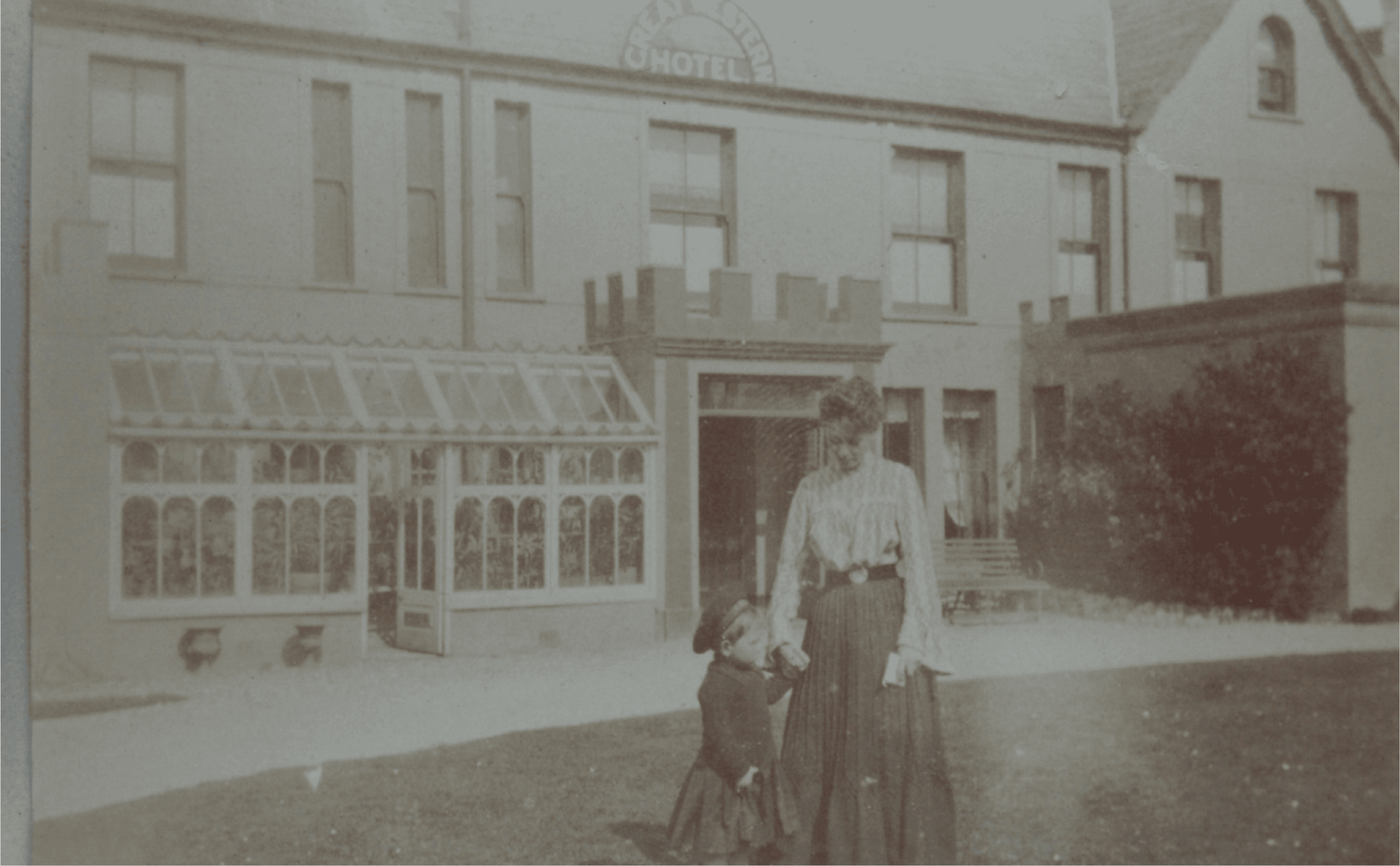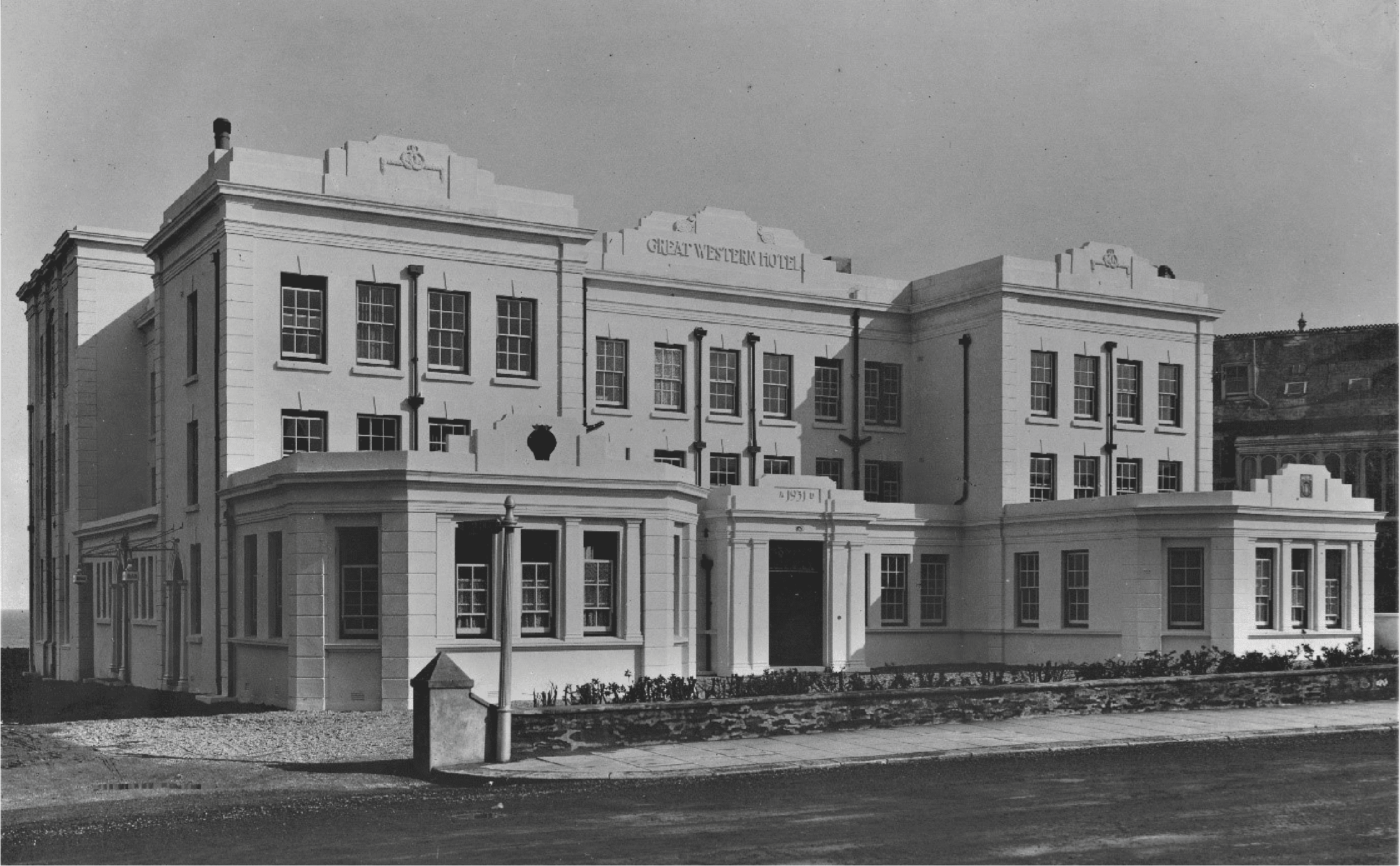Step into our history: The Great Western
E ach of our pubs has a rich, unique history. This month, we're featuring the famous Great Western located in iconic Newquay, step into our pub past and explore this landmark venue this summer.

The beginning
Construction for the Great Western began in 1877. The then owner, Henry Francis Whitefield, of St Columb Major, was described in 1873 by the Post Office Directory as ‘conveyancer, assistant overseer, clerk to the burial board, local board and insurance agent’, and in the 1881 census as a ‘solicitor’. Our landmark hotel has stood proudly on the cliffs of Newquay ever since.
Whitefield initially lived in Union Square, St Columb however by 1891, he had retired to Station Road, Newquay, presumably while his new house was built alongside the hotel.
For the original ‘country house’ design, Whitefield called upon the prolific Truro-based Silvanus Trevail. Appointed as Newquay’s assistant surveyor, Trevail immediately set to work devising new urban schemes, housing developments, and road layouts. He envisaged that towns served by the new proposed Great Western Railway on the little developed north Cornish coast offered huge development opportunities.
Whilst this initially seemed a fantastic endeavour, it proved a disastrous concept, during which time various housing and townscape schemes collapsed, however, Trevail was still commissioned to build three hotel developments for the town – the Great Western (1877), the Atlantic (1892), and the Headland (1900).
The railway arrived in Newquay in 1876, and the Great Western, funded with a £2,000 contribution from the scheme, was officially opened for business in April 1879.
On opening, the West Briton and Cornwall Advertiser noted:
T he Great Western Hotel, at Newquay, opened for business on Monday, the 7th instant. The situation is all that can be desired, commanding magnificent views of the headland, harbour, and the coast up to Trevose Head. It is said there are fifty rooms. The architect was Mr. Silvanus Trevail. Doubtless the establishment will be appreciated by visitors to this delightful coast.
A growing reputation
There were some bumps in the road during the early years. Despite the magnificent views, the hotel fell victim to the council’s negligence in treating sewage. An inquiry noted that an outlet pipe situated close to the hotel was making visitors’ stays ‘unpleasant’ because of the ‘offensive accumulation’ – an injunction was later filed by Whitefield and George Rowland Roberts, a former basket maker who became the hotel’s first ‘proprietor’.
Nevertheless, Newquay became a popular holiday destination (and still is today!) and the Great Western (being the first hotel in the town) was in demand. The popularity of the hotel prompted a rear extension to be added in 1894 (the hotel reopened in June under entirely new management, redecorated and refurnished) − further alterations followed in 1907 by local architects Cowell and Cowell.
With its growing popularity, the hotel faced competition locally. Originally called the Great Western Bakery, one premise changed its name to the Great Western Temperance Hotel. With the temperance movement gathering pace during the Victorian period, the competitors campaigned against the recreational use and sale of alcohol and promoted teetotalism. Signage was placed at the railway station directing potential customers to this new establishment, and Whitefield later declared it was a ploy aimed to ‘deceive intending customers or guests’. The right to trade under the name ‘Great Western Hotel’ was also heard in court, but the judge concluded that the use of the word ‘temperance’ caused minimal confusion.

Building for the future
In 1931, the hotel was enlarged and remodelled once again. Although the original building was never demolished, the coving and corbels on the first floor are now believed to have been the only surviving features. The new work was completed in a contemporary Art Deco style, with symmetrical elevations and white stucco finish, yet echoed some of the earlier features to retain its charm. More accommodation was built into the new third floor, taking the room total to 66 – the same as today.
The hotel became particularly popular with cyclists, due to its prominent location and relaxed atmosphere, but has since become a go-to for visitors from all walks of life. In 1926, the Prince of Wales, Edward, even paid a visit – check out the hotel’s guest book on your arrival) St Austell Brewery took ownership in 1985, lovingly restoring the property and maintaining it as a part of the town’s historic past.
Where we are today
The Great Western has been an iconic part of Newquay for over a century and continues to thrive as part of the vibrant community. Whether it’s exploring this famous stretch of the coastal path, hitting the waves for a surf, or just enjoying the laid-back charm of the town, the Great Western serves as the perfect base.
With 66 bedrooms available on site, a gorgeous sun terrace, and a resturant with sea views unlike any other, it's a fantastic getaway. Kick back with a pint of refreshing korev to make the very most of the seaside scenery before drifting asleep to the ebb and flow of the ocean below you.

Plan your summer escape to Newquay
There’s no better time to visit Newquay than the Summer when this laid-back surf capital comes alive with visitors from across the globe. With festivals such as Boardmasters and Tunes in the Dunes on your doorstep, there’s even more reason to visit during the warmer months.
Of course, a visit wouldn’t be complete without a dip in the big blue. Follow the winding steps down the cliff path from your room to take the plunge on the sandy stretch known as Great Western Beach (you can see where Whitefield took inspiration for the hotel’s name!). Swim, SUP, or try your hand at coasteering to make the very most of the famous North coast landscape before exploring some of the independent cafes and bars dotted along the town.